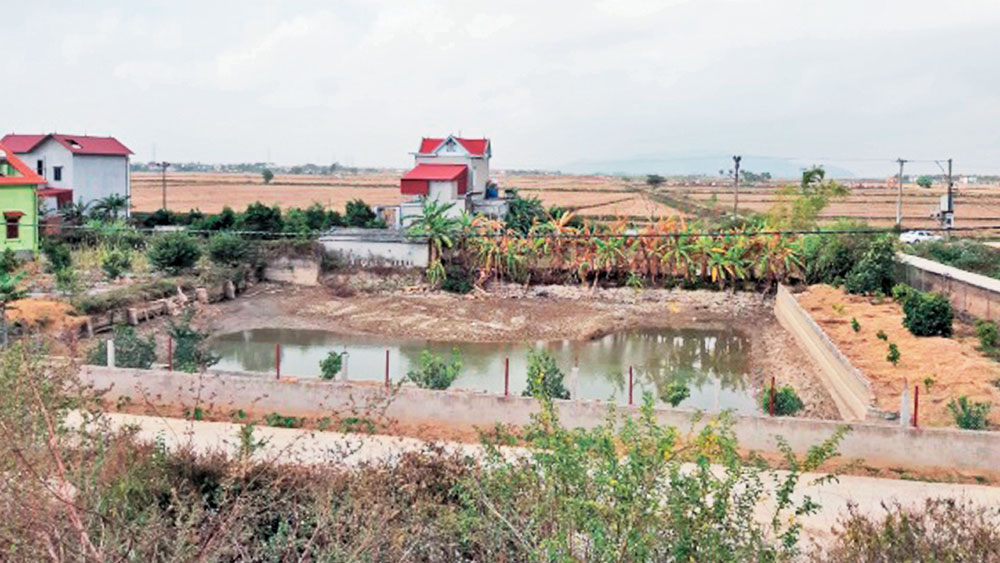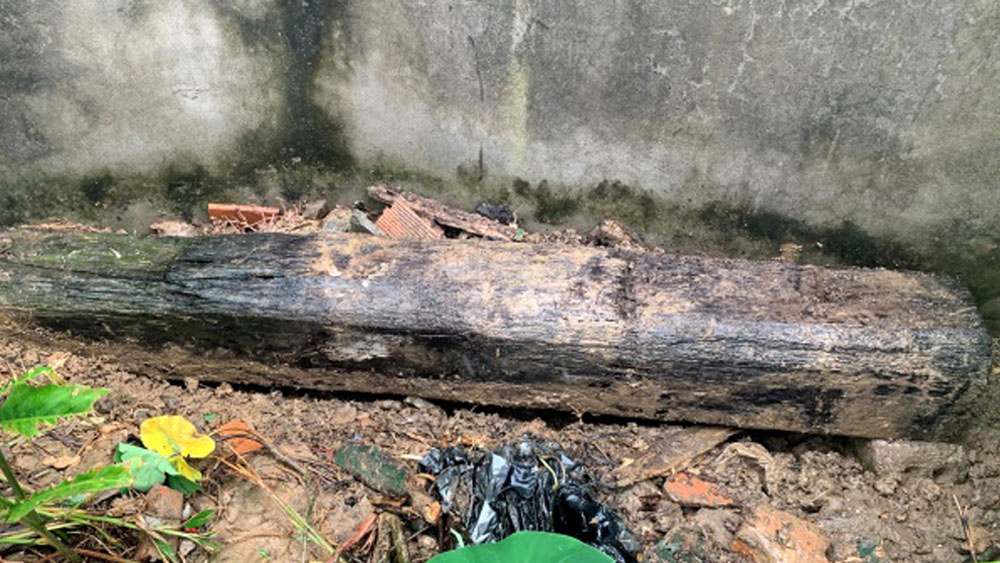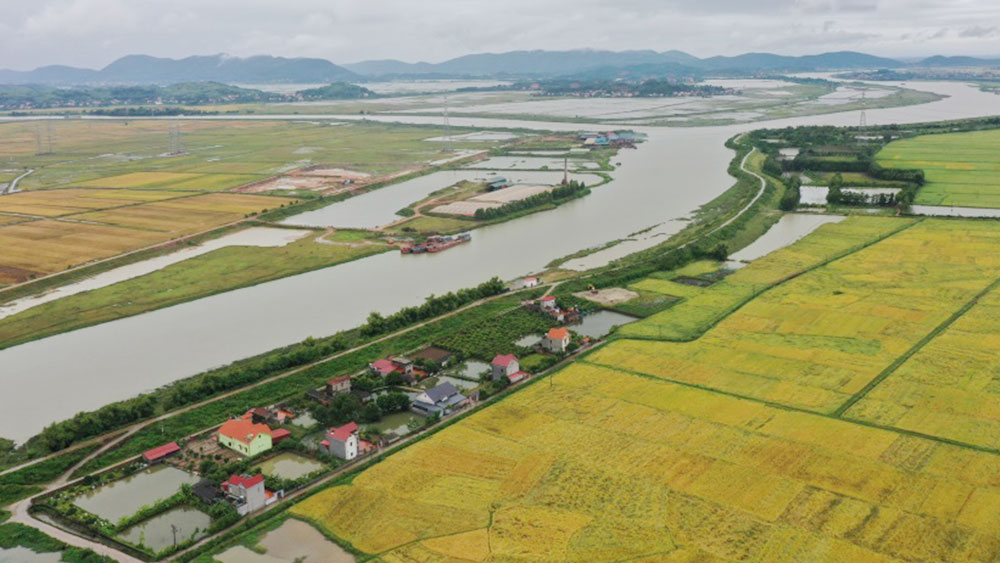The mystery of Tien La wooden architecture
The handwritten document by Thon, then a communal statistician, was sent on July 14, 1997 to report the discovery of many ironwood artifacts deep in the pond of a household in Tien La village when people dug the ground to build a local pumping station in 1993.
New archaeological discoveries
It has been more than 20 years, but the description in the document is still a new issue that few people know. "In 1993, Tien La village built a local pumping station and took soil from the lake bed to fill the pump tank. When discovering ironwood artifacts deep in the lake, in November 1994, 10 laborers secretly worked at night and in a short time they found 93 ironwood logs and then use them all...".
 |
|
In the fish pond where ancient ironwood slabs were discovered. |
The discovered artifacts consist of many wooden slabs with 2 to 3.5m in length and 0.3m in diameter. They are assembled into a semi-circular architecture, with a system of deeply buried columns, horizontal beams and vertically placed wooden bars.
Because the relic site was found in the farming fields of the people, illegal exploitation then stopped. The untapped wooden architecture is still deep underground.
After receiving the information, the Bac Giang Museum sent a working group to inspect and verify the artifacts in December 2019 and sent a report to the Vietnam Institute of Archaeology asking for coordination in surveying the area. In October 2020 and December 2021, a joint team of the Bac Giang Museum, the Vietnam Institute of Archeology, and the Vietnam Archaeological Association conduct a survey in this area.
Initially findings showed that this is a wooden architecture located deep in the ground in the area of Mr. Ha's fish pond. The fish pond area, where the relic was discovered, according to the owner, from the bottom of the pond, it is at least 2m to reach the previously discovered wooden slabs.
 |
|
The remaining log is at Mr. Ha's house. |
In addition to the pieces of wood that have been processed into household utensils, the survey team has accessed an intact log which is currently kept at Ha's family. The large log is in the shape of a box, with the two ends neatly cut. The three sides are flat and the other side is still a round log. The wood is very strong and good, 1.85m long, 0.25m wide, and 0.19m thick. On the two planes there are square holes through the wood body. The square hole has a large iron nail. The researchers determined that this is a log hammered on the surface to create the floor of an architectural work.
Initial assessments
The wooden architecture discovered is located on the riverside, most likely a work closely related to the strategic position of this area in history. The discovery site sits near the Temple of Tran Minh Tong in Tien La village and a little further the Co Phao Temple worshiping the famous general Nghia Xuyen in the Tran Dynasty. It is about 2.5 km from Vinh Nghiem Pagoda. On the other side is the Kiep Bac relic site dedicated to national hero Tran Hung Dao.
From the artifacts discovered and through research evaluation, it can initially be determined that the wooden architecture found in Tien La village was built with good ironwood and standard techniques, showing the importance of this architecture in contemporary social life.
In addition to 93 ironwood logs that were used by people in 1994, according to local people, there are still many other logs in the ground. Based on the information collected, it can be initially believed that there was a large-scale wooden architecture in this area. Because it is located in a low-lying area along the river, and through the shape of the artifacts, it can be a wooden structure in the shape of a pentagon, a box or a dock.
 |
|
A view of the area where the wooden architecture was discovered. |
According to Dr. Le Thi Lien from the Vietnam Archaeological Association, this might be the shape of a large boat mold. Its age was also determined based on the surveyed site. It is shown that the alluvial deposit has buried the wooden structure at a depth of about 2m.
To form this deposit layer, according to scientists, it took about 500 - 700 years. Besides, the nature and method of woodworking and especially the T-shaped boat nails showed that these artifacts were often used in the building of large wooden works and were quite popular during the Tran - Le So Dynasties (13th – 15th centuries).
The wooden architecture discovered in Tien La village need to be studied in more detail. However, the initial results indicated that there are many historical imprints related to the Tran Dynasty in this area that must be further clarified. In the coming time, the Bac Giang Museum will conduct research activities to determine the remaining location of this mysterious architecture as well as carefully survey the related material and cultural vestiges to propose excavation and preservation solutions.
 Bắc giang
Bắc giang















Reader's comments (0)